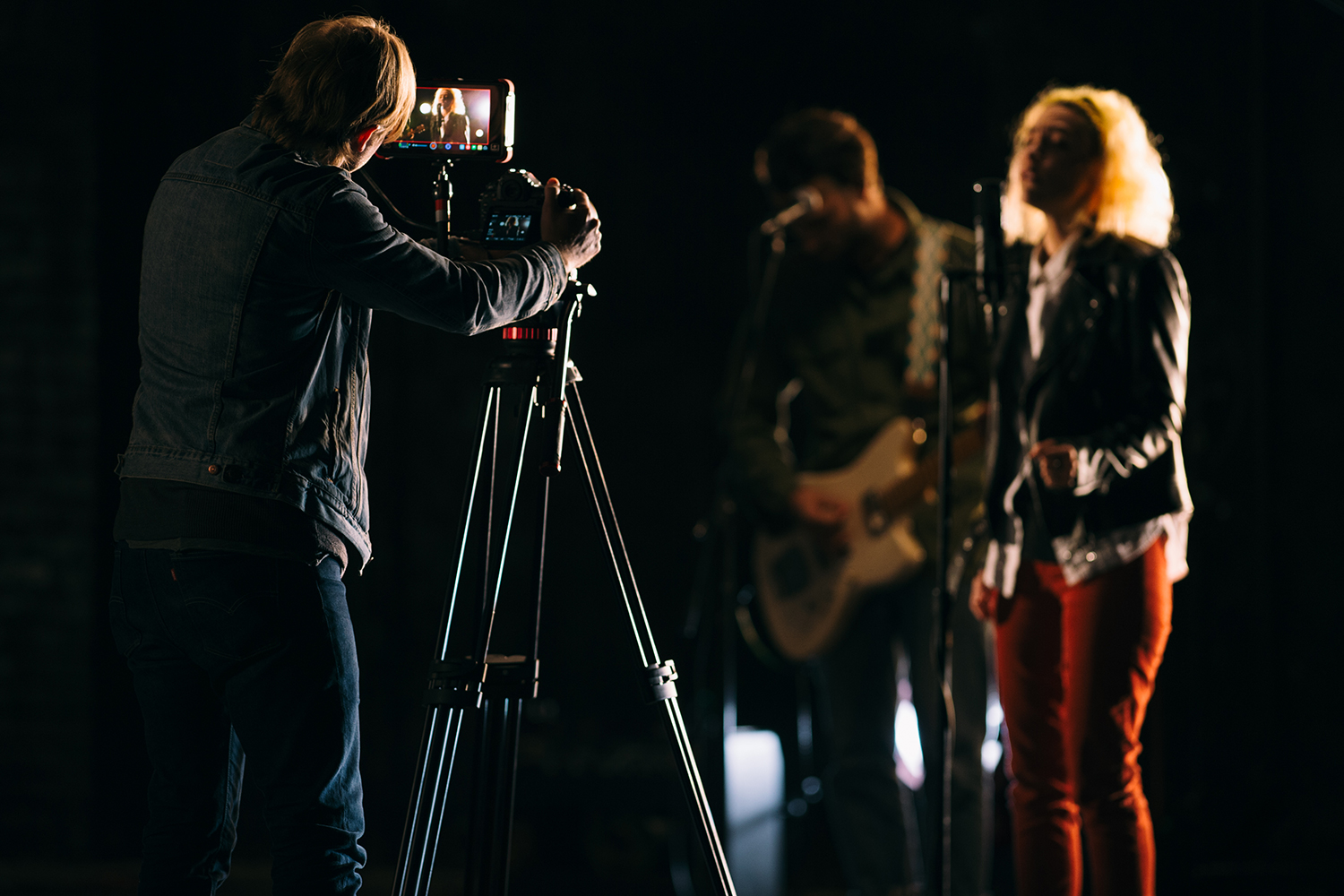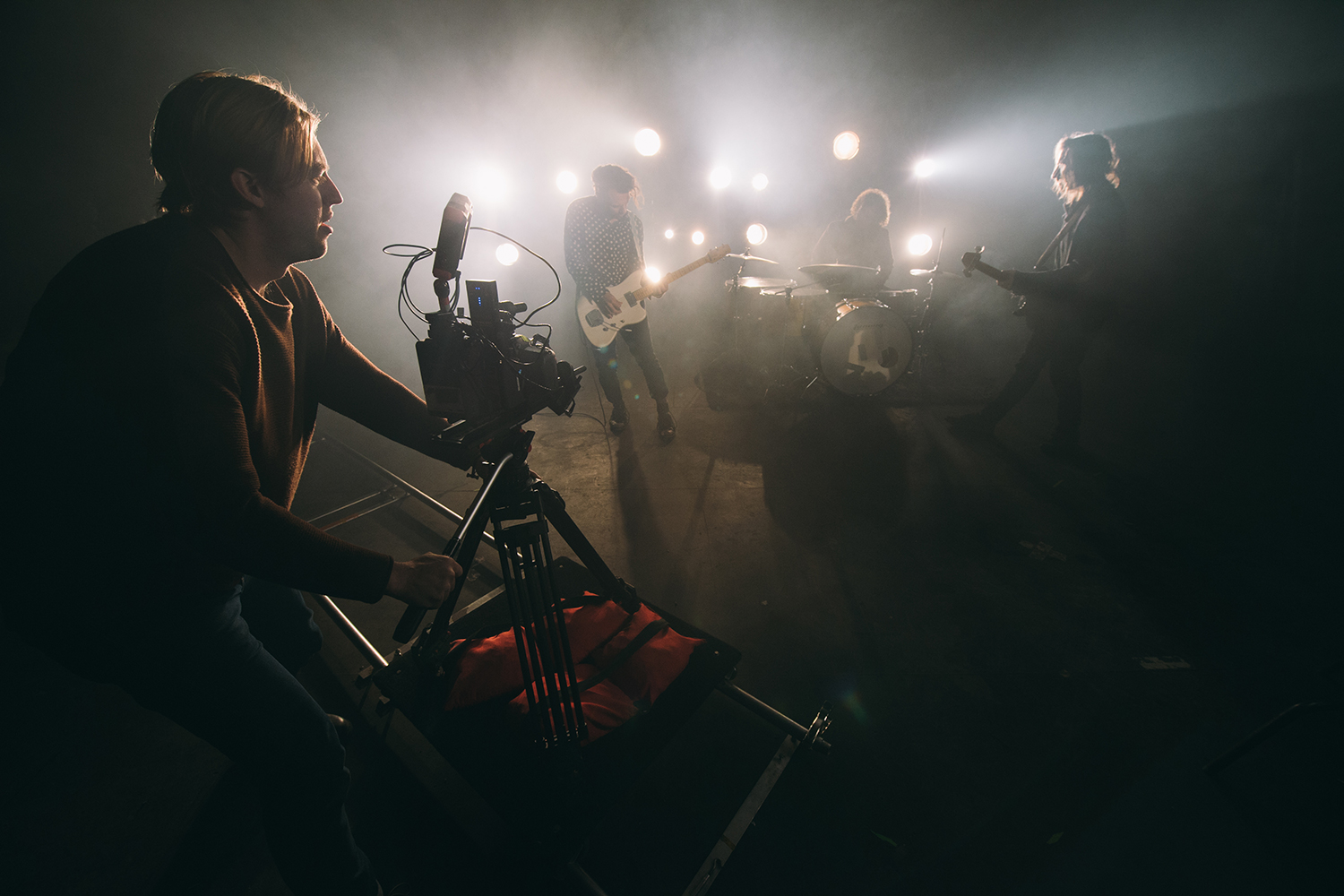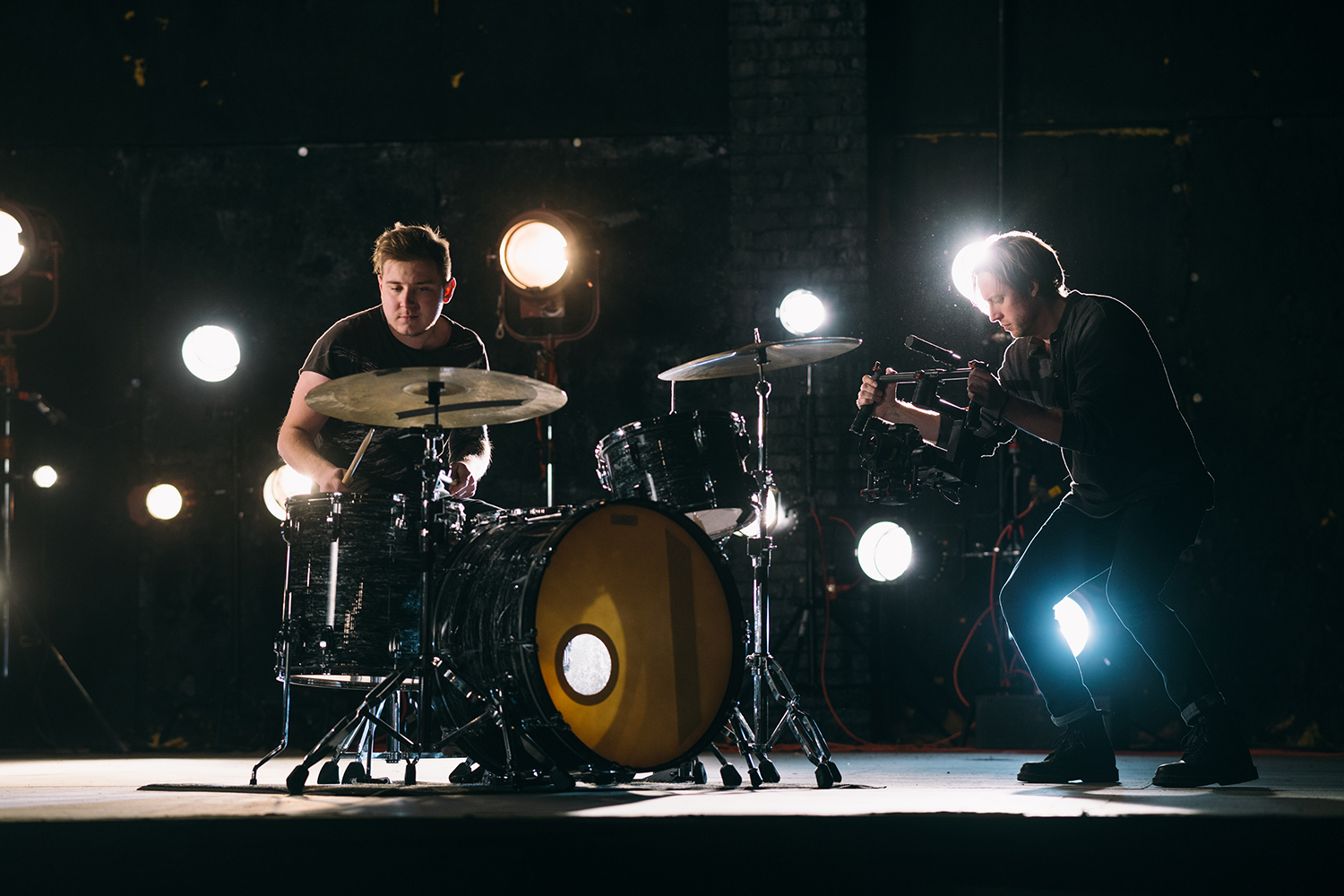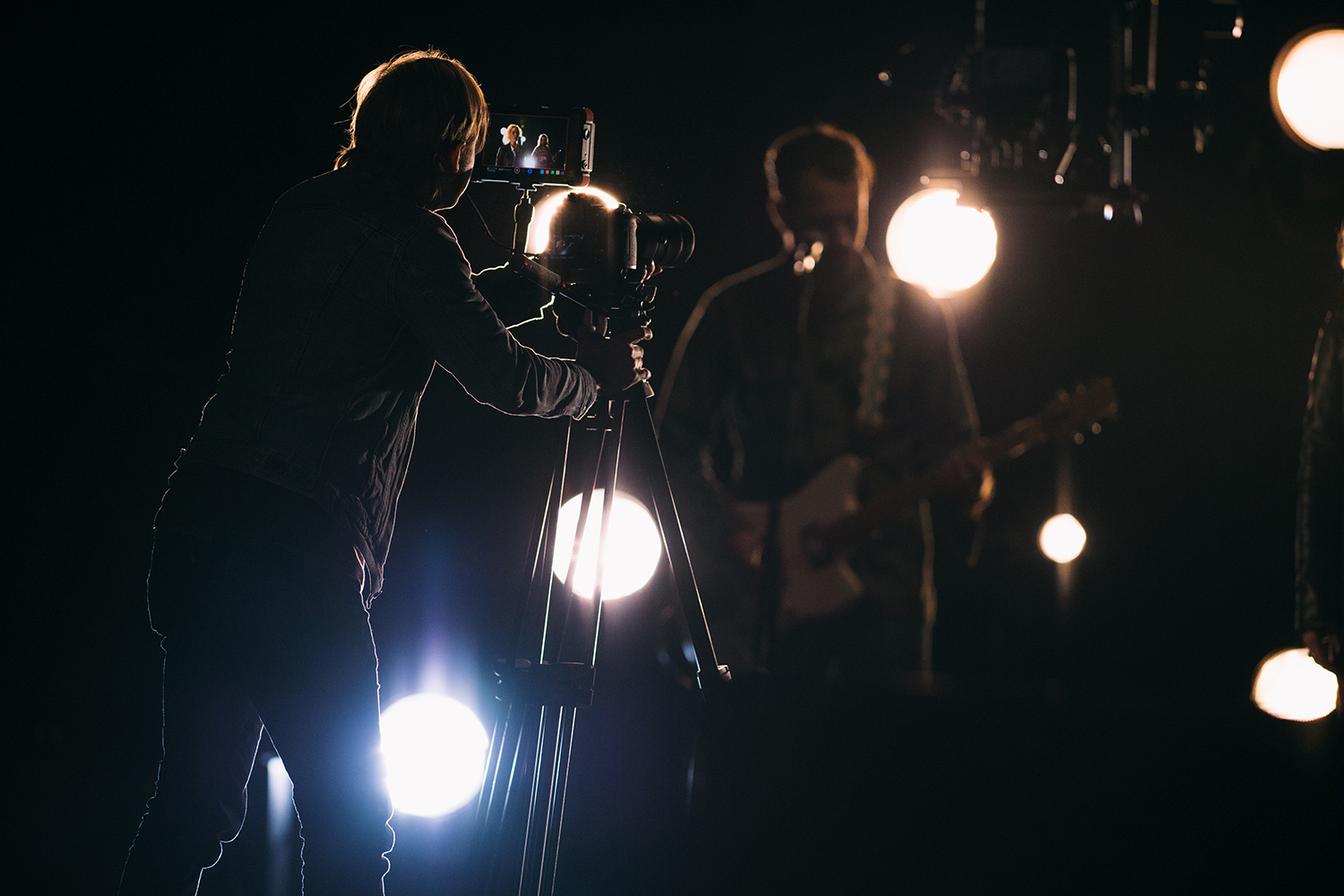
Photography and music have long been part of Chris Hershman’s repertoire, but video took him by surprise. Now a filmmaker and photographer working with musicians like NEEDTOBREATHE, Switchfoot, Alabama Shakes, Betty Who, and more, Hershman says he moved from working a music retail job to producing music videos by mastering one task at a time.
In high school, he switched his career ambitions from photographer to musician and got a job at a major music retailer. After a few years, he bought a Nikon D300S (a 2009 DSLR), and as Hershman put it, it just happened to shoot video — then a much rarer feature on a DSLR than it is today. One music video turned into several freelancing gigs, which then allowed him to quit his day job, saying he’d never work in music retail again.
Three months later, Hershman landed a position as a filmmaker — for another major music retailer. All irony aside, the position meant he could work from nine-to-five building his craft. After four years, he stepped into freelance filmmaking and photography full-time.
Having entered the world of filmmaking at a time when DSLR video was in its infancy, Hershman’s skills and techniques evolved alongside the technology. Now a Nikon Ambassador, he recently sat down with Digital Trends to talk video, tech, and Nikon’s new mirrorless cameras.
Tell us about your process for creating a music video. How do you get started? Where do your ideas come from?
I start with the music. I listen to it — and I can usually see what I would want to do the first few times listening through. I just listen for the mood — is this going to be a bright happy video? My last video was for an artist named Emily Blue and it’s a bright, happy pop song. I built the set for that for every shot. That’s unusual for me but I listened to it and thought, there’s no other way.
Falling in Love by Emily Blue. Produced by Max Perenchio, directed by Chris Hershman. Shot on a pre-production Nikon Z7.
I’m just trying not to repeat myself. I’m trying to do something different every time I go out.
Usually, I coordinate with my crew and come up with cool camera movements or techniques that we haven’t done in previous shoots. We’ll go down a list of cool things we could do that we haven’t done and see how they would fit into the vision for the video. We try a lot of cool lighting and working with our artists playing into the light in an existing location.
I’m just trying not to repeat myself. I’m trying to do something different every time I go out. I’m trying to use different techniques, a different approach. That keeps the videos not looking cookie cutter. I think variety is maybe what is what has helped me over the years — the ability to one day build a 100 percent set and the next to do something on location with all natural light.
How has technology changed since you started, from the D300S to the new Nikon Z7 and Z6?
I grew as Nikon grew. I didn’t know what the camera needed, I just knew I could use some more advanced video options. The next camera came out, the D7000, which had better video options. Each time they came out with a new camera, they thought pretty heavily about how they could improve video. I started realizing what I needed to operate like a video camera should.
Fast forward to where we are today, with the Nikon Z6 and Z7. All I can say, from being a photographer and a filmmaker, this is the most advanced camera for filmmaking and it’s also the most versatile for photography — and it’s one camera. I get to use it a number of different ways for both my still image clients and my video clients. It’s nice just to have one camera, and it seems like Nikon has been with me every step of the way — they’ve always had something for me to have in my bag to do my job.
I’m getting different looks then I’ve ever gotten before. That gets me excited. I’m happy that Nikon has really caught up on the video side of things where they need to be. But, they have also surpassed things — the low light ISO on this Z6 is incredible. [At time of interview] I’ve only had two days to shoot with the Z6, but I’m blown away by the progress in their cameras.
For video, how does mirrorless compare to a DSLR?
It was an addition to my bag at first, but now I’m sold on it.
I like that it’s lighter and smaller. When I build out a video rig, I can still complete something professional, but compact. I fly with it and it’s not a big hassle, yet I still have all my accessories on it. When that’s on your shoulder all day, a couple pounds here and there makes a massive difference. It doesn’t take up a lot of space in my bag. It was an addition to my bag at first, but now I’m sold on it.
I have to say the electronic viewfinder is incredibly useful. The fact that you can have continuous autofocus for video is one of the largest game changers between what Nikon offered in DSLRs versus in mirrorless. There are also cooler, more flexible color grading options for filmmakers.
Editor’s note: While Nikon DSLRs have AF-S and AF-F, the Z-series also has AF-C. AF-F allows for full-time autofocus during video. AF-C refocuses when the shutter button is pressed halfway, allowing the videographer to choose when to refocus while recording video.
Full-frame mirrorless was a really big move for Nikon. What do you think about Nikon’s mirrorless move so far, and what would you like to see next?
I’m really looking forward to the new glass. I like the way the new lenses look on the new body. The lenses are so sharp. It’s harder to make an image sharper in post, so I’d rather have it the sharpest in camera and have the option to soften it later in post.
Treasure by Company of Thieves, Directed by Chris Hershman
I didn’t shoot mirrorless before Nikon came out, I tried a few, but never owned any. My transition to mirrorless was very easy, I had no problems with it and for what I do it works better. I think a lot of people will find the advantages of mirrorless to be something that they gravitate towards.
Any advice for new videographers just getting started?
Get around other filmmakers. The way video works, you don’t always have to be the guy that’s holding the camera. You find the right people, be a helpful person with a good attitude and they’ll let you on set. Then you can start seeing what roles exist in that world and see how those roles work. Once you get to know those people, you are more likely to be given a job by someone you know that can’t make the gig. The more people you know in the industry [in which] you want to work, if you get close to them and learn their process, then they will be comfortable recommending you. Be on set as much as you can, be a kind, helpful person as much as you can, and don’t wait to create.
Be on set as much as you can, be a kind, helpful person as much as you can, and don’t wait to create.
Don’t wait to create is a big thing I push for. If you don’t have a paid gig, give yourself an assignment, give yourself a challenge. For me, I like to have big sets and a crew of 30, but it’s also a big headache and stressor that takes a lot of energy. Sometimes, I just go out and shoot a music video with someone just handing me a lens or two. I make it a more creative project. Get out there and don’t wait to get a paid project to build your video portfolio.
Make a simple music video, set up your camera, record some audio, practice syncing. Leave your camera on a tripod the first time, then, go back and add movement or a second camera. Just build. Build on what you did last time and you’ll be good. You don’t have to know everything at the beginning. The best thing you can do is to learn one thing, own that thing, and then build onto it. That’s how I got to where I’m at — I tried one technique, then said, okay, that’s in the bag. I started training my eye, seeing the shots by what I knew from the last one.
This interview has been edited for brevity and clarity.






